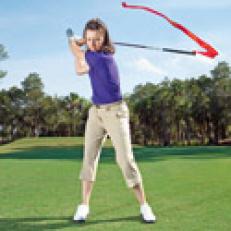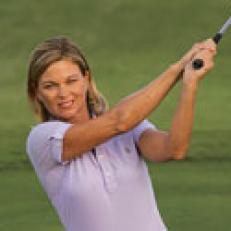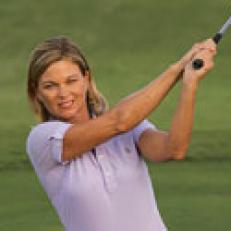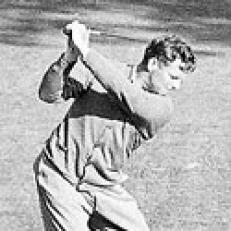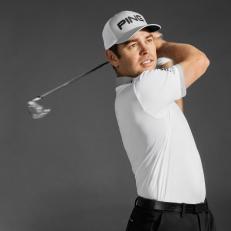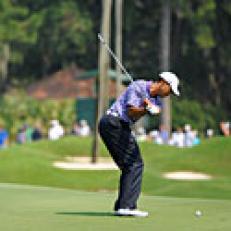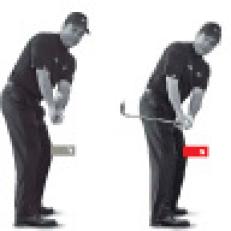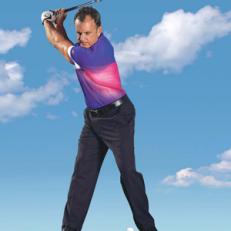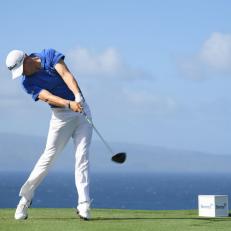Golfers are always telling me their swings feel out of sync. It's usually because the body and the arms don't match up during the swing. For example, higher handicappers tend to swing the arms back farther than they turn the body, which throws off the sequence on the downswing. Better players often swing back fine, but then the lower body jumps out in front on the downswing, the arms falling behind. Let's look at how the body generates power, but also how the hands and arms have to keep pace to direct the club to the ball. Think load it, lower it, let it go.
LOAD IT
Here's the correct backswing sequence: Swing your arms, turn your body, shift your weight. Swinging your arms pulls your upper body into action, which moves weight to your back foot. The body loads from the top down in a 2-to-1 ratio: The shoulders start parallel to the target line and turn 90 degrees, the hips turn 45, and the knees about 22. Picture your body coiling and creating leverage against the ground. The arms also load. They start straight, then the right elbow folds to 90 degrees, which sets a powerful lever. The left wrist hinges 90 degrees to the top--another lever that stores tons of energy.
DRILL
Start with the club extended then swing back over the ball and make your backswing. This drill teaches good width going back, with the momentum of the swing turning the body and moving weight to the right foot. You'll feel how the right arm folds and the club hinges 90 degrees to the left arm.
LOWER IT
Starting down, your lower body moves first. Your left knee and hip should shift forward, lining up over your left foot and creating a "post" or axis for the body to rotate around. The sequence of motion is: Shift your weight, swing your arms, turn your body. As your weight moves forward, your arms naturally drop, setting up an inside path to the ball. Imagine a link between your hands and left side: As your body shifts left, it pulls your hands down. Then you turn through.
DRILL
Hold your palms together in a mock setup, then swing your right hand to the top and slap your left. You'll instinctively swing your right hand up over your right shoulder, the elbow bending 90 degrees. From there, the hand has a direct route back to your other hand. That's the same route you want in your golf swing.
LET IT GO
As you continue to move forward, your arms come down in front of your body. Your right elbow drops to a position near your right hip. Because your arms are approaching on an inside path, your right arm is straightening and your left wrist is unhinging in response to the swing's momentum. Your left hip keeps turning out of the way, which causes your left leg to straighten. This inward rotation of the hip exerts an outward force on the club, thrusting it from the inside out to the ball. The body turn provides the power, but the hands must stay in sync to sling the clubhead accurately into the ball.
DRILL
This is more of an image, really. I've looped a long exercise band under my left foot. As I swing back, the band stretches, storing energy. When my left leg shifts toward the target, my hands are pulled down. Groove that feeling: The arms go back and load the swing, then the body shifts forward and unloads it.TODD ANDERSON ranks in the Top 20 among Golf Digest's 50 Greatest Teachers. He is the director of instruction at Sea Island Golf Club in St. Simons Island, Ga.


